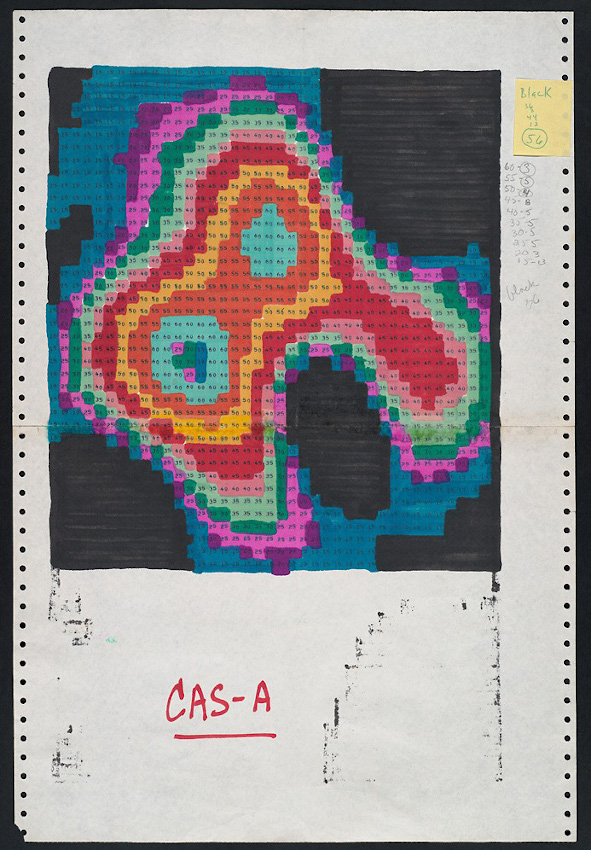
 Credit: Harvard University Archives
Credit: Harvard University Archives
Stitching the Material World
The complex material world we see around us is cooked up in the thermonuclear forges at the centers of stars. When stars explode (or lose star-stuff through strong stellar winds) these complex chemicals get distributed into space, available to build ever more complex systems. Our understanding of the process by which the Universe evolves from a chemically simple state to a more complex one began with the work of Cecilia Payne-Gaposchkin, whose detailed study of stars showed that stars are mostly composed of the simplest elements known, hydrogen and helium. This was a true turning point in our understanding of the composition of the material Univese. One important way we now study the details of this process of chemical enrichment is through X-ray observations of the hot gas in supernova remants, enormous clouds of gas and dust ejected when massive stars explode. The image above is a a needlepoint pattern based on an early image of the hot gas in the Cas A supernova remnant taken by the X-ray telescope on the third Orbiting Astronomical Observatory, Copernicus, in the 1970's. Building upon this early work, astronomers have stitched together an incredibly detailed understanding of how chemical elements are distributed throughout this supernova remnant.
Published: May 25, 2020
<
HEA Dictionary ● Archive
● Search HEAPOW
● Other Languages
● HEAPOW on Facebook
● Download all Images
● Education ● HEAD
>

Each week the HEASARC
brings you new, exciting and beautiful images from X-ray and Gamma ray
astronomy. Check back each week and be sure to check out the HEAPOW archive!
Page Author: Dr. Michael F. Corcoran
Last modified Monday, 26-Feb-2024 17:44:58 EST


